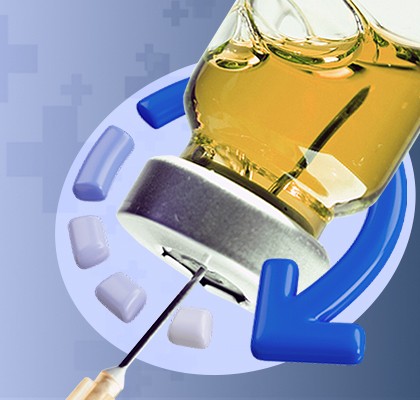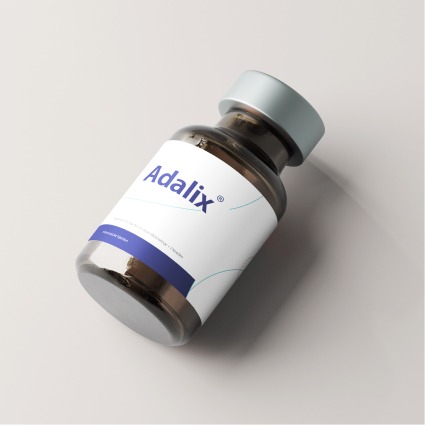Introduction
Vaccines have transformed modern medicine, playing a pivotal role in preventing infectious diseases and safeguarding public health. This article explores the latest advances in vaccine technology, highlighting cutting-edge research and developments that are revolutionizing the field. We will delve into new vaccine design and delivery platforms, breakthroughs in molecular biology, and novel strategies against various pathogens, providing a comprehensive view of the future of immunization.
mRNA Vaccine Technologies
mRNA vaccines, a revolutionary breakthrough in immunology, use messenger RNA to instruct cells to produce proteins that trigger an immune response. Unlike traditional vaccines, mRNA vaccines don’t use live viruses, enabling rapid development and adaptation, as seen in the COVID-19 pandemic. Current research focuses on enhancing their stability, reducing side effects, and improving delivery methods, such as lipid nanoparticles. Innovations like self-amplifying RNA and circular RNA are being explored to increase efficacy and prolong immune response, positioning mRNA vaccines at the forefront of rapid and adaptable disease prevention strategies.
Advances in mRNA Vaccine Development
The rapid development of mRNA vaccines has been a monumental achievement in the fight against COVID-19. These vaccines work by turning human cells into antigen factories, a method that has proven effective but is still in its infancy. Current research focuses on enhancing mRNA vaccines’ efficacy, reducing side effects, and improving delivery methods. Innovative approaches, such as the use of polymer nanoparticles, are being explored to increase the payload capacity and thermostability of these vaccines, potentially eliminating the need for ultra-cold storage. This progress represents a significant step forward in vaccine technology, aiming to make mRNA vaccines more accessible and effective against a broader range of diseases.
Overcoming Limitations of Current mRNA Vaccines
Despite their success, current mRNA vaccines face limitations in immunogenicity, reactogenicity, and cost. Recent developments aim to address these issues by exploring new RNA platforms. For instance, advancements in lipid nanoparticle (LNP) technology are underway to reduce inflammatory responses associated with vaccine administration. Partnerships like that between Moderna and IBM, employing artificial intelligence and quantum computing, are at the forefront of optimizing LNPs for enhanced safety and performance. Additionally, the exploration of self-amplifying RNA and circular RNA technologies is opening doors to longer-lasting and more potent immune responses, with less vaccine dosage required. These improvements are pivotal in making mRNA vaccines more effective and widely accessible.
Self-Amplifying and Circular RNA Technologies
Self-amplifying RNA technology represents a significant leap in vaccine development. This approach involves vaccines that encode not only a viral antigen but also the RNA itself, leading to prolonged antigen production and a more robust immune response. Notably, a self-replicating mRNA vaccine for COVID-19 has been approved in India, demonstrating the potential of this technology. Similarly, circular RNA vaccines are emerging as a promising avenue, providing sustained transcription within the cell and potentially offering long-lasting protection. These innovations in mRNA vaccine technology could lead to more effective immunizations against a range of infectious diseases, marking a transformative era in vaccine research.
Innovative Vaccine Delivery Systems
Innovative vaccine delivery systems are reshaping the accessibility and efficacy of immunizations. Microarray patches, for instance, are small, painless, and easy to administer, broadening vaccine reach, especially in remote or resource-limited areas. Mucosal vaccines, targeting the respiratory or gastrointestinal tracts, promise to enhance immune responses at pathogen entry points. Additionally, skin-based delivery systems like high-density microarray patches aim to target immune cells with minimal discomfort efficiently. These advancements signify a move towards more patient-friendly, accessible, and effective vaccination methods, crucial for global health.
Microarray Patches: A Revolution in Vaccine Accessibility
Microarray patches (MAPs) are set to revolutionize vaccine delivery, particularly in low- and middle-income countries (LMICs). These patches, either coated in dry vaccine or containing a dissolvable formula, offer a needle-free, painless way to administer vaccines. They are not only cost-effective but also bypass the logistical challenges of cold chain storage and professional administration. With MAPs, vaccines become more accessible, especially in remote areas. Currently, there are MAPs in development for measles and rubella, with potential expansion to other immunizations. The ability of MAPs to reach previously unreachable populations could significantly impact global public health.
Mucosal and Skin Delivery Platforms
Exploring vaccine delivery through mucosal surfaces, such as the respiratory tract or gut, presents an innovative approach to enhancing vaccine efficacy. This method aims to induce a protective immune response at the infection’s site. Notably, a nasal vaccine against SARS-CoV-2 has been authorized in India, demonstrating the feasibility of this approach. Similarly, skin-based delivery systems, such as the high-density microarray patch (HD-MAP), deliver vaccines beneath the skin surface, potentially requiring lower doses and ensuring a more direct route to the immune system. These alternative delivery platforms could revolutionize vaccine administration, offering more efficient and less invasive options.
Needle-Free Vaccine Administration
Needle-free vaccine administration, as exemplified by the HD-MAP technology, offers a significant advancement in vaccine delivery. This approach involves a patch applied to the skin, which delivers the vaccine via microprojections. This method not only enhances the vaccine’s reach to the immune system but also requires a lower quantity, which is crucial during pandemics. The HD-MAP technology has shown promise in clinical trials and is versatile enough to accommodate various vaccine types. Its potential to facilitate large-scale immunization campaigns, particularly in pandemic situations, cannot be overstated.
Novel Approaches for Coronavirus Vaccines
In response to the COVID-19 pandemic, novel approaches for coronavirus vaccines have emerged. Beyond traditional methods, researchers are developing vaccines targeting the virus’s critical regions necessary for its life cycle, offering broader protection against various strains. Synthetic biology and immune optimization techniques are being used to create vaccines that generate broad immune responses to key, less mutable virus sites. These strategies show promise in producing vaccines that remain effective against new variants, reflecting a proactive approach to pandemic preparedness and global health security.
Targeting the ‘Achilles Heel’ of Coronaviruses
Innovative strategies in coronavirus vaccine development are focusing on the virus’s critical regions required for replication. By targeting these regions, rather than just the spike proteins, researchers aim to develop vaccines that provide broader protection against various coronavirus strains. This approach, which involves identifying unique antigen structures, has shown promising results in providing broad-based immune responses against different coronaviruses. Such a strategy could lead to more effective and future-proof vaccines capable of countering a range of current and potential coronavirus variants.
Broad-Based Immune Response Strategies
The development of vaccines that elicit broad immune responses is a key focus in coronavirus vaccine research. This includes leveraging synthetic biology and immune optimization to target key sites of the virus that are less likely to mutate, thereby enhancing the vaccine’s effectiveness against a wide array of variants.
Compatibility with Various Vaccine Delivery Systems
Innovative coronavirus vaccines are being designed for compatibility with multiple delivery platforms, including DNA, mRNA, and viral vector-based systems. This flexibility in delivery mechanisms can facilitate rapid deployment and wide-scale immunization against emerging variants.
Other Significant Vaccine Developments
Significant vaccine developments have been made against diseases like malaria, tuberculosis (TB), and Respiratory Syncytial Virus (RSV). For malaria, vaccines such as RTS, S, and R21/Matrix-M show promising efficacy, especially in children. RSV vaccines, targeting vulnerable groups like infants and older people, are progressing with various strategies like maternal immunization and monoclonal antibodies. TB vaccine research is overcoming challenges related to immune response understanding and trial complexities. Also, Shigella vaccine development is focused on creating a quadrivalent vaccine to tackle the major strains, demonstrating the continuous evolution and diversification in the field of vaccinology.
Malaria Vaccine Breakthroughs
After over a century of research, promising malaria vaccines have emerged. These vaccines target specific proteins of the malaria parasite, showing efficacy rates of up to 80% in children. Notably, these vaccines do not require sub-zero storage, making them more feasible for use in malaria-endemic regions.
RSV Vaccines and Global Hospitalizations
Respiratory Syncytial Virus (RSV) vaccines are poised to make a substantial impact on global hospitalizations. Different strategies, including maternal immunization and monoclonal antibodies for infants, show high efficacy against RSV. These advancements could significantly reduce the burden of RSV, particularly in lower- and middle-income countries.
Tuberculosis Vaccine Development
Efforts to develop effective TB vaccines face challenges, including limited knowledge about the human protective immune response to TB and the need for large, expensive trials. Despite these challenges, several candidates are in Phase III clinical trials, indicating progress toward more effective TB vaccines.
Shigella Vaccine Strategies
Shigella, a leading cause of diarrheal deaths, is a prime candidate for vaccine development. Current efforts focus on developing quadrivalent vaccines that target multiple serotypes of Shigella. Strategies to overcome challenges in vaccine development include targeting dual markets for both children in low-income countries and travelers.
Addressing Vaccine Hesitancy and Accessibility
Vaccine hesitancy and ensuring equitable access remain significant challenges in the global vaccination effort. Innovative strategies and collaborative efforts are essential to address these issues. Public health initiatives focused on education and outreach are crucial to overcome vaccine hesitancy. Simultaneously, advancements in vaccine technology, including heat-stable formulations and easier delivery methods, are key to improving accessibility in various regions, particularly in lower- and middle-income countries.
Future of Vaccine Technology
The future of vaccine technology is bright, with continuous innovations in vaccine design, delivery, and manufacturing. These advancements promise more effective, accessible, and rapid responses to emerging infectious diseases. The integration of technologies like AI and machine learning in vaccine development is poised to revolutionize the field further, enabling more personalized and precise vaccine strategies.
Impact on Global Public Health
The latest advances in vaccine technology have a profound impact on global public health. They offer new avenues to combat infectious diseases and significantly reduce the burden of preventable illnesses. The ongoing research and development in vaccine technology are pivotal in paving the way for healthier communities and a safer world.
As we approach the end of this comprehensive overview of the latest advances in vaccine technology, it’s important to acknowledge the role of innovative companies in this field. One such company is Opal Bio Pharma (OBP), the first biopharmaceutical company in Oman. OBP stands out as a leading manufacturer, developing vaccines, biosimilar medicines, and treatment methods such as oncology and gene therapy. With its aim to supply Central and Eastern Europe, OBP is making strides to raise the flag of Oman among medical industry leaders.
Conclusion
The landscape of vaccine technology is rapidly evolving, with groundbreaking advancements shaping the future of disease prevention. From novel vaccine platforms like mRNA technologies and microarray patches to innovative approaches in combating viruses like COVID-19 and malaria, these developments are revolutionizing the way we tackle infectious diseases. The role of companies like Opal Bio Pharma in this landscape is noteworthy, as they contribute to the global effort of advancing medical science. As we look to the future, the continued innovation and collaboration in vaccine research and development hold the key to a world with reduced impacts of preventable diseases.

